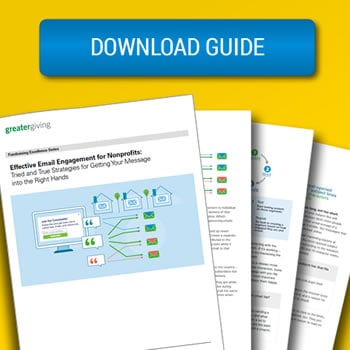
This post is the third in a series designed to teach the fundamentals of email marketing for nonprofits. These posts are based on the Effective Email Engagement for Nonprofits: The definitive guide to better nonprofit email marketing. Each post focuses on an element of conducting an email marketing campaign, from crafting email to measuring recipient responses and adjusting your email approach accordingly.
CAPITAL CAMPAIGN: A pre-determined period of fundraising activity to raise a goal amount of money, which will fund a specific purpose or project.
Capital campaigns can last anywhere from a few months to a few years, depending on the size of the goal (and the project), and how long your development team can maintain that level of activity.
Every great capital campaign starts with a great idea—a project the community can support and get behind. It’s the heart and soul of a successful campaign. (There won’t be anything to write about in your campaign emails if the soul of your project is missing!)
First, distill what the campaign’s really about.
You should already know heading into a capital campaign what it is that you want to fund—what specific project, item, or idea that now stands at the crux of your mission.
But it’s not just this project, this money, or this gift. A good capital campaign is really about the mission and the message behind it.
Why are you here, working on this right now? Why is this step critical to achieving what your nonprofit’s set out to do?
Not only should you know the ins and outs of what you plan to fund, but it’s key to brainstorm and outline why your purpose or project (the new wing on the school, the costly hospital equipment) will improve and enhance your nonprofit’s work, and the community at large.
Return to that core message in every email you send. That’s what will sustain the soul of your capital campaign throughout the campaign—and what will keep donors engaged over the long term.
What’s a reasonable expectation for your community to contribute?
Now that you know what your campaign’s about, it’s time to commit to goals.
Your goal:
the fundraising amount required for your nonprofit’s project/investment/big purchase
+
the time restriction for raising that amount.
Whatever goal your team decides on, remember this: it will set the tone for the rest of your campaign, for the duration of your campaign.
Think carefully about what your community has the power to contribute. Setting your fundraising goal too high can make the supporter base feel inadequate. Setting the fundraising goal too low means it’s easily accomplished before the deadline, and doesn’t allow for tension to build as the campaign progresses. 
Establish benchmarks and progress points along the route to your goal.
As your group gets closer to meeting the fundraising goal, send out progress updates to your list to let donors and supporters know how far along you are—and what that means for the project.
Setting these benchmarks in advance lets you sketch out some story moments: those points in the fundraising journey where you can pause to infuse the campaign with heart and soul. When you reach $5,000 out of the total $25,000, perhaps, you can stop and mention what $5,000 means for your organization; what it could buy to help complete your project; and the tangible and emotional impact it will have on your mission.
Line up some suggested giving amounts.
In your campaign donation emails, one of the keys to getting big donations is to encourage selected giving levels. Of course, supporters are limited by their personal giving power; but planting the seeds for what size of donations you need can push a donor to give a little bit more than they’d originally planned.
For example, you could say that “a donation of $500 buys a treatment for one child,” or “$20 will feed a rescue animal for one month.” Linking donations to a tangible impact gives your recipients the sense that their donation matters. Make sure your donation suggestions are realistic and empower donors, rather than being so high that it discourages them—since they can’t afford any of your levels.
Solicit some big guaranteed donations to get the ball rolling,
and schedule more of them down the line as your campaign progresses.
People are led by example—when we see someone else already doing something (in this case, donating to a cause), we are more likely to follow suit. Utilize Greater Givings Online Payments to accept donations online.
Before you begin your campaign, go out and solicit a few large donors for donations during the course of your campaign that you can feature during your campaign. Those pre-committed donations serve two purposes:
- Help you better estimate your total fundraising goal, since you can factor those major donations into the amount;
- Provide inspiring announcements to punctuate your campaign emails!
There’s a happy medium to strike where big donations aren’t making up too large of a portion of your total fundraising amount—or else individual donors will feel like their donations don’t matter. Instead, you want those donations to get your donor base riled up and ready to contribute.
Matching donations are a great addition to any capital campaign, and inspire donors to give more!
